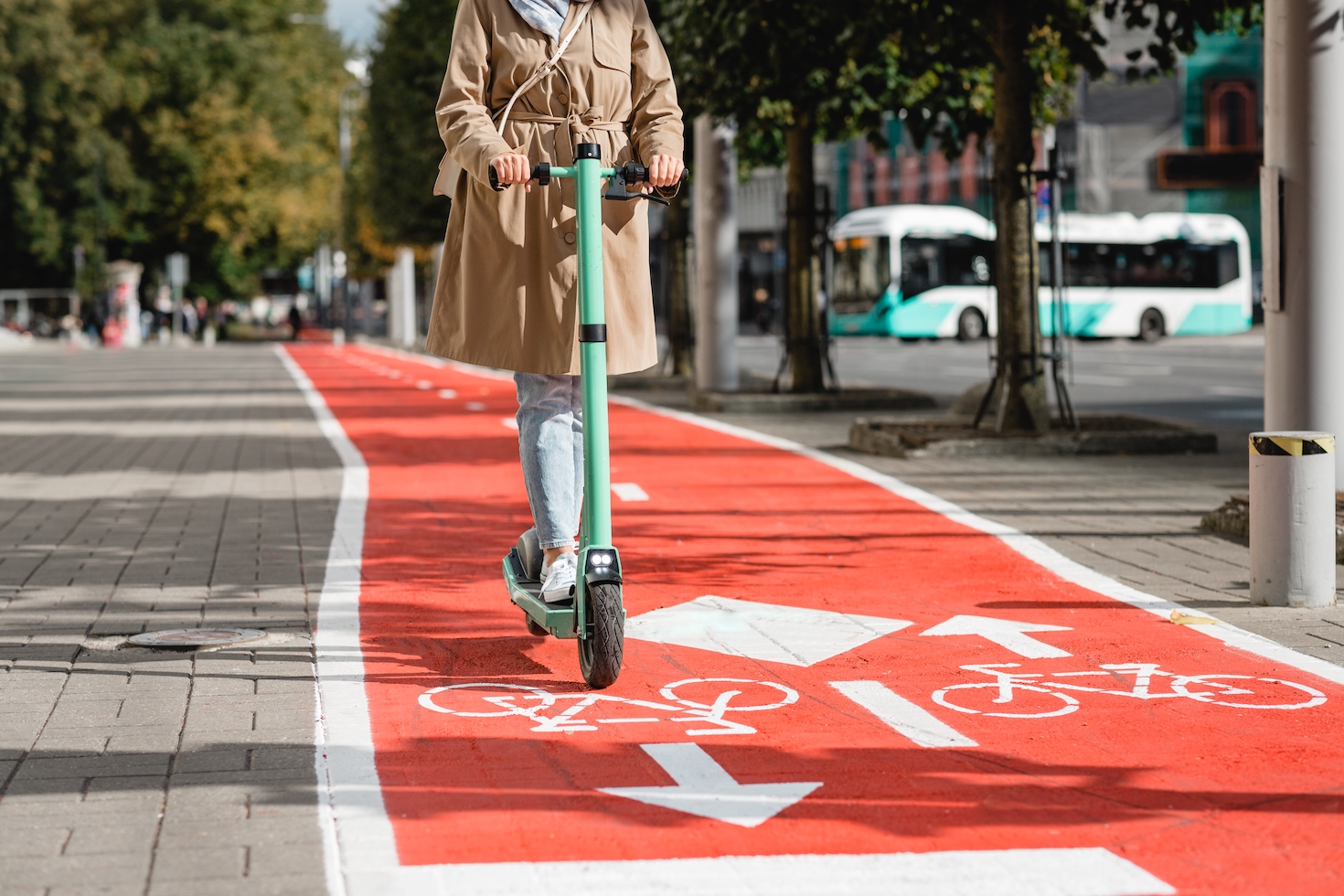This article is an excerpt from GreenBiz Group’s 16th annual State of Green Business, which explores sustainable business trends to watch in 2023. Download the report here.
The road to decarbonizing transport is looking more promising. Shifting transportation away from cars toward public transport and micromobility options across the world’s cities must roughly double in this decade to align with the Paris Agreement. And between 40 to 80 percent of global miles traveled in cities must be from walking, cycling or public transit, according to the C40 Cities Climate Leadership Group. Businesses, governments and individuals are starting to take this road.
Large company fleets, such as IKEA’s, are leading the way, driven partially by the mandates of climate-forward cities. Paris and London, for example, are pushing companies to accelerate decarbonization through zero- and ultra-low emission zones as well as congestion pricing for delivery services. New York City last year announced a request for delivery-making businesses and freight operators to help kick off a pilot in July to develop “efficient, sustainable and economically feasible” distribution micro-hubs. Doing so would accelerate cargo bike deliveries, which more than doubled in nine early months of the coronavirus pandemic, between May 2020 and January 2021.
UPS in Europe began testing its Quad electric cargo delivery bike in the Big Apple last year. Volta Trucks, a Swedish electric commercial vehicle manufacturer, partnered with CAKE, an electric motorcycle and moped company, to support retail giant H&M in mode-shifting its last-mile deliveries in Paris. Amazon launched its first fleet e-cargo bike and on-foot delivery program in the U.K. And Urb-E, a cargo bike and final-mile delivery company, announced that it’s expanding to Los Angeles.
More innovation is coming. While micromobility can be a valuable tool to decrease emissions depending on its application, minimobility — which includes three- or four-wheeled vehicles for one to two people with added protection from the elements — is also grabbing attention. A global McKinsey report found 30 percent of respondents are likely or very likely to consider minimobility in the future.
To maximize emissions reductions, it will be critical for cities to use micromobility and minimobility as replacements for driving, not public transit and walking.
One analysis found that if the 50 largest U.S. cities adopted certain shared mobility services at scale, they could cut 100 million metric tons of greenhouse gas emissions annually, equating to 40 percent of all U.S. transport emissions.
Still, the transition won’t be easy. Cities will need to prioritize shifting people away from personal vehicles; build new bike lanes; and expand, electrify and improve public transit to serve more people and create interconnected systems between modes of transportation. However, cities aren’t alone as the federal Infrastructure Investment and Jobs Act provides $89.9 billion for public transit.
To maximize emissions reductions, it will be critical for cities to use micromobility and minimobility as replacements for driving, not public transit and walking. In good news, several companies including Lyft and Uber-backed Lime note that 36 percent and 27 percent of users, respectively, are mode shifting from cars to shared e-bikes or scooters.
In addition, lifecycle emissions are coming into focus for the micromobility industry. The circularity of shared e-scooters and bikes was a deeper concern in the early days of the industry four to five years ago, with vehicles prone to shorter lifespans. However, a recent study found that these lightweight vehicles reduced net carbon emissions across their lifecycles in five out of six cities. Also, recent news that Lyft will recycle its e-bike and e-scooter batteries in partnership with Redwood Materials points to further industry progress on net carbon emissions and vehicle lifespans.
Several startups have their eye on improving outdated public transit systems. For example, 4AI Systems uses machine learning vision systems to enhance rail networks, improving public transit efficiency and helping cities increase ridership. Meanwhile, cities worldwide continue to adopt zero-emission buses, China having the largest global share.
Net-zero transport emissions by 2050 will remain a dream without shifting away from polluting vehicles. Public transit, micromobility and smart policy decisions all hold the key, and more players are reaching for it.
[Want more great analysis of electric and sustainable transport? Sign up for Transport Weekly, our free email newsletter.]

IL PRIMO ECOMMERCE SPECIALIZZATO IN DELIZIE AL TARTUFO E CAVIALE – CAVIAREAT.COM
